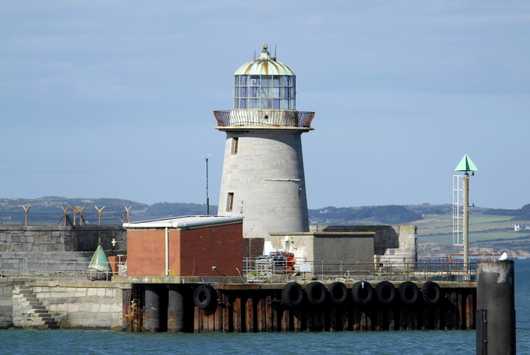Holyhead Mail Pier

Following the 1800 Acts of Union, whereby the Irish Parliament was abolished, and Ireland for a while became one with the United Kingdom, several large scale infrastructure projects across Britain commenced to improve communication between London and Dublin; Probably the most notable of these being Thomas Telford's London to Holyhead Trunk Road (Now largely the A5), which was essentially an upgrade of existing turnpike roads on the alignment of Watling Street, the Roman 'Iter II' route.
This still significant route ends at Admiralty Arch, on Salt Island, at the landward end of Admiralty Pier.
Construction of Admiralty Pier (more commonly known as the Mail Pier) commenced in 1810, and it was completed with a tapered granite lighthouse at it's end in 1821. Designed by John Rennie, the lighthouse is of national significance, being one of few designed by Rennie that still remains in largely unaltered condition, and is recognized as an integral part to his larger harbour scheme, earning it Grade II listing.
The light's purpose was to guide packet ships into the harbour - a very similar albeit not identical light was provided at the other end of the route in Howth a few years earlier.
The Mail Pier light fell into disuse after the much more substantial 1.7 mile long breakwater was built to the North East, providing shelter to over 400 acres of open deep water, greatly enlarging the outer reaches of the harbour.
Now sitting inside the Port of Holyhead's secure area along with the historic Admiralty Arch, it is not possible to visit the lighthouse, however it can be viewed from the end of Turkey Shore Road, or from some ferries departing from Holyhead.
